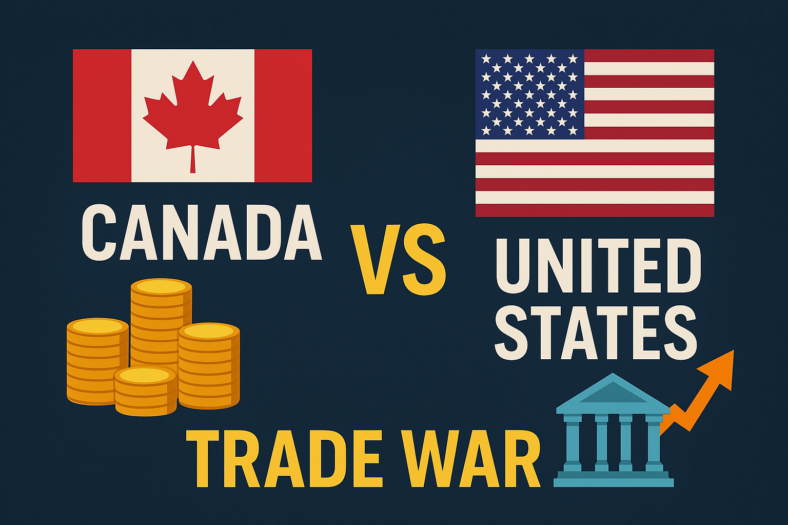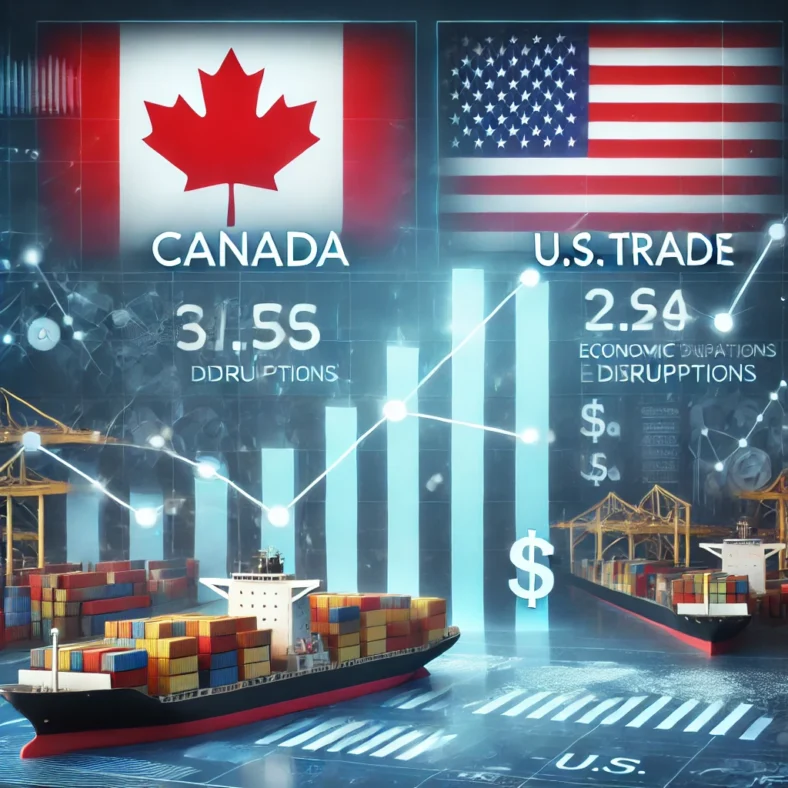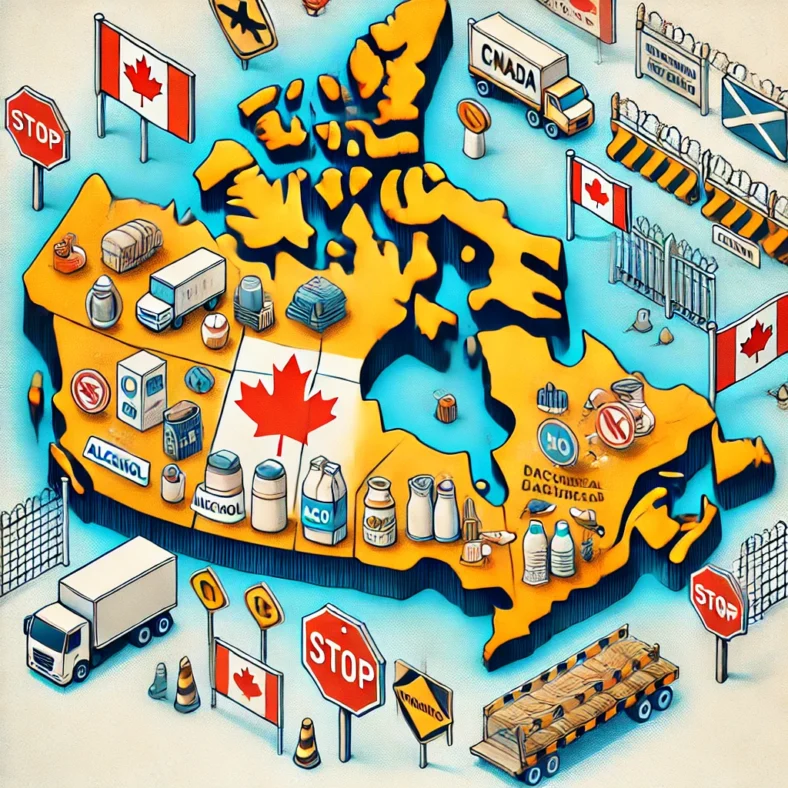The economic relationship between Canada and the United States is deeply interconnected. With the U.S. Federal Reserve taking a cautious approach due to mixed signals from the labour market and growing inflation concerns, the Bank of Canada recently lowered its key interest rate to 3.75%, a significant cut of half a percentage point. But how effective is this move in addressing Canada’s economic issues?
The Impact of U.S. Policies on Canada’s Economy
The U.S. economy’s strong job growth and moderating inflation could lead to a smaller rate cut from the Federal Reserve compared to Canada’s recent action. Alternatively, the Fed could decide to pause rate changes entirely, which may have implications for economic conditions in both countries in the coming months. The upcoming U.S. elections add another layer of complexity, potentially influencing monetary policies further.
In Canada, cooling inflation, slowing manufacturing sales, and cautious consumer spending may pave the way for another 0.5% rate cut by the end of the year. However, the question remains: Does the Bank of Canada have enough influence to counteract shifts in U.S. monetary policy through its own tools, or do external factors limit its independence?
The Transmission of Global Monetary Conditions
Global financial centers transmit monetary conditions across the world via credit flows and leverage. Any divergence in policies between the U.S. and Canada immediately impacts Canada, influencing exchange rates and the economy more broadly. For instance, fluctuations in the loonie (Canadian dollar) and their effects on inflation and consumer behaviour are directly tied to these global dynamics.
Canada’s Economic Challenges: The Double Trilemma
Canada faces two main trilemmas. The first is monetary, involving the balancing act between stable exchange rates, independent monetary policy, and free capital flows. Countries must choose between these objectives, as they cannot achieve all three simultaneously. For example, European nations have given up monetary independence in favour of a strong euro and open financial markets.
In contrast, Canada opts for free capital mobility and an independent monetary policy, allowing the loonie’s value to be determined by market forces. This gives the Bank of Canada the flexibility to adjust interest rates while capital freely moves across borders, but it comes at the expense of exchange rate stability.
On the fiscal side, the government faces challenges such as climate change, immigration, and wealth inequality. However, public opposition to higher taxes and the already high levels of public debt and deficits limit the government’s ability to respond effectively.
What Happens If the Bank of Canada and the Fed Diverge?
Should the Bank of Canada reduce interest rates while the Fed holds steady, the loonie could depreciate sharply. This happened in June 2024 when the Bank of Canada lowered rates by 0.5%, and the Fed followed with a similar cut three months later. In such cases, the Bank of Canada may use interventions like sterilization, buying Canadian dollars and selling reserves, to stabilize the currency.
Long-term deviations between the two central banks could lead to capital flight, reducing the money supply and pressuring domestic bank lending. With private and public debt already high, any decrease in lending could further impact the economy, potentially leading to a decline in long-term interest rates.
Investors might react by engaging in carry trade strategies, borrowing at low interest rates in one currency and investing in another to earn higher returns. Such movements could have a significant impact on bond markets, asset valuations, and key economic sectors.
The Limitations of the Bank of Canada’s Independence
While the Bank of Canada can set its short-term policy rate independently of the Fed, it has limited control over long-term rates. Exchange rate expectations and global risk factors influence these longer-term rates. As a result, fluctuations in the loonie can impact mortgage rates, corporate borrowing costs, and broader economic conditions.
Monetary Policy Alone Isn’t Enough
The Bank of Canada’s primary mandate is to maintain low, stable, and predictable inflation. While interest rate cuts can help achieve this goal, deviating too far from U.S. policy can have widespread effects on the Canadian economy. These impacts may not be evenly distributed, benefiting investors and banks while putting pressure on the working class.
The central bank often focuses on providing liquidity to the financial sector, but this approach does not always address challenges faced by everyday Canadians. For example, in 2022, Governor Tiff Macklem warned employers against raising wages to match inflation, fearing a wage-price spiral. This approach highlighted the central bank’s limited scope in tackling broader socioeconomic issues.
The Need for a Coordinated Approach
Even if the Bank of Canada wants to address these issues, it is limited by its ability to influence multiple economic outputs through a single instrument, interest rates. Therefore, a comprehensive strategy is needed, involving both monetary and fiscal policies working together. The central bank should not only focus on inflation but also report on the broader trade-offs associated with rate cuts.
The Risks of Long-Term Divergence
The Bank of Canada must carefully manage the effects of its rate cuts, especially as further cuts could lead to long-term currency depreciation and a “capital famine.” In the short term, differences in policy with the U.S. may be manageable, but over time, the loonie’s depreciation could become necessary to maintain economic stability.
Conclusion: A Call for Balanced Policy Measures
While monetary policy remains vital, it should not be seen as the sole solution for Canada’s economic challenges. A balanced approach, where monetary and fiscal policies work in harmony, is crucial. The government and central bank must engage in broader public discussions that go beyond inflation, addressing fundamental issues such as housing affordability, wealth inequality, and economic resilience.




















